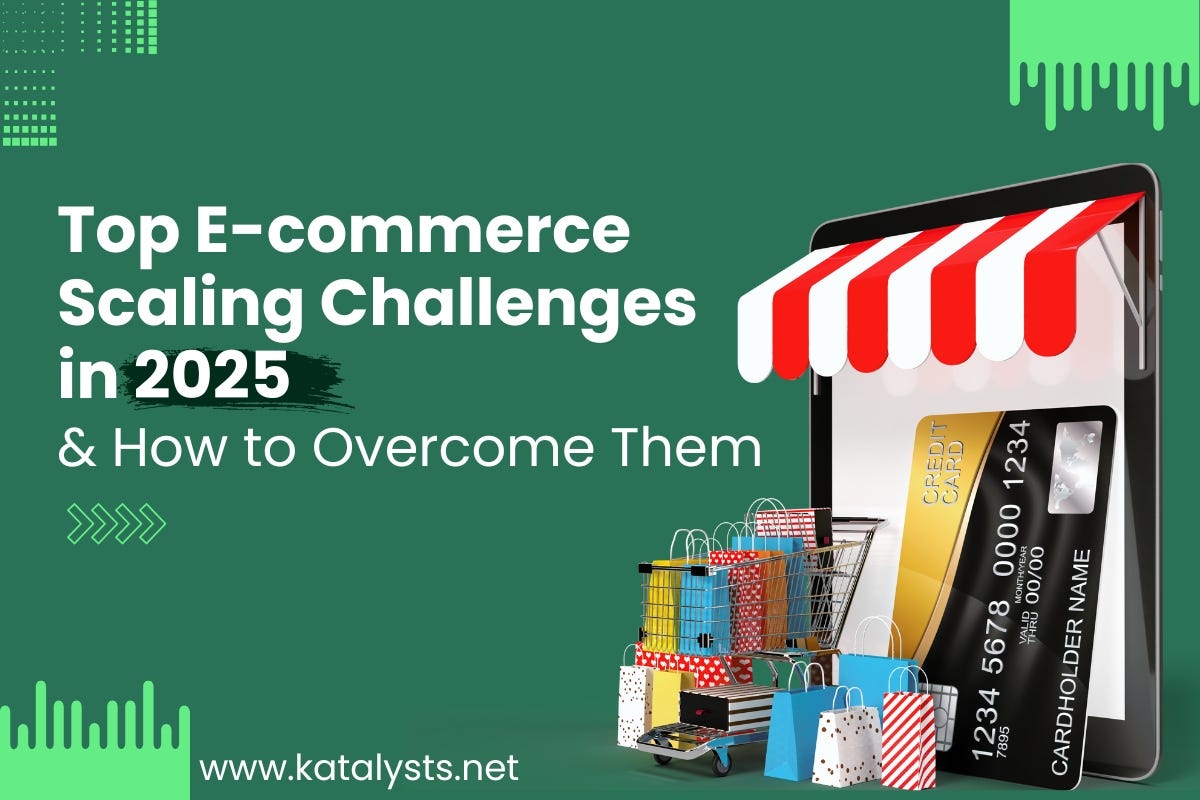
Scaling an e-commerce business in 2025 presents unique challenges due to an overcrowded space, evolving market dynamics and technological advancements. To navigate this landscape effectively, it’s essential to understand the current obstacles and implement strategic solutions. Here are the key challenges and actionable strategies to overcome them:
Intensifying Market Competition
Challenge: The e-commerce sector is experiencing heightened competition, with major players like Amazon and Alibaba expanding their reach. Additionally, the rise of ultra-low-cost retailers such as Shein and Temu has disrupted traditional pricing models, making it difficult for established brands to maintain market share.
Solution:
- Differentiation Through Unique Value Propositions: Focus on offering unique products or services that set your brand apart. This could involve exclusive product lines, superior quality, or exceptional customer service.
- Embrace Niche Markets: Target specific customer segments with tailored offerings to reduce direct competition and build a loyal customer base.
- Leverage Advanced Technologies: Implement technologies such as AI-driven personalization to enhance customer experiences and foster loyalty.
2. Escalating Customer Acquisition Costs
Challenge: The cost of acquiring new customers is rising due to increased competition and market saturation.
Solution:
- Invest in Customer Retention: Develop loyalty programs and personalized marketing campaigns to encourage repeat purchases. Retaining existing customers is often more cost-effective than acquiring new ones. Engage a Marketing Agency to implement customer retention strategies to encourage repeat sales.
- Optimize Marketing Spend: Utilize data analytics to assess the effectiveness of marketing channels and allocate budgets to those with the highest return on investment.
3. Supply Chain and Inventory Management Complexities
Challenge: Scaling operations can lead to challenges in managing supply chains and inventories, especially with global disruptions affecting logistics.
Solution:
- Adopt Advanced Inventory Management Systems: Implement AI-powered tools to monitor stock levels in real-time and predict demand accurately.
- Diversify Supply Chains: Establish relationships with multiple suppliers across different regions to mitigate risks associated with regional disruptions.
4. Adapting to Shifts in Consumer Behavior
Challenge: Consumer preferences are rapidly evolving, with increasing demand for personalized experiences, sustainability, and innovative shopping formats.
Solution:
- Enhance Personalization Efforts: Utilize AI to analyze customer data and deliver personalized product recommendations and marketing messages.
- Commit to Sustainable Practices: Incorporate eco-friendly materials and transparent supply chains to appeal to environmentally conscious consumers.
- Explore Emerging Shopping Channels: Adopt technologies like augmented reality (AR) to provide immersive shopping experiences, allowing customers to visualize products in their environment before purchasing.
toxigon.com
5. Managing Returns and Refunds
Challenge: High return rates, particularly in sectors like fashion, can erode profit margins and strain logistics.
Solution:
- Provide Detailed Product Information: Offer comprehensive descriptions, high-quality images, and customer reviews to help buyers make informed decisions, thereby reducing the likelihood of returns.
- Implement Virtual Try-Ons: Use AR technology to allow customers to visualize products, such as clothing or accessories, in real-time, enhancing confidence in their purchases.
Several makeup brands have successfully implemented virtual try-on technology using augmented reality (AR) to help customers visualize how products will look before purchasing, reducing return rates. Here are some notable examples:
- MAC Cosmetics — Offers a Virtual Try-On tool that allows customers to test lipsticks, eyeshadows, and foundation shades using their phone or webcam.
- L’Oréal Paris — Developed the ModiFace AR tool, which lets users try on different makeup products in real time through their website and app.
- Sephora — Features the Sephora Virtual Artist, enabling shoppers to experiment with lipsticks, foundations, and even full-face looks before buying.
- Maybelline — Provides a Virtual Try-On feature where users can test various lip and eye products via webcam or uploaded photos.
- NYX Professional Makeup — Uses ModiFace-powered AR to allow customers to experiment with full makeup looks, lip colors, and eye products virtually.
6. Ensuring Data Security and Privacy
Challenge: As data breaches become more prevalent, maintaining robust cybersecurity measures is critical to protect customer information and maintain trust.
Solution:
- Invest in Advanced Security Protocols: Implement end-to-end encryption, multi-factor authentication, and regular security audits to safeguard data.
- Control Costs: Avoid overspending on resourcing & advertising in the first few months. Consult agencies like Katalysts that are focussed on sustainable and result oriented marketing.
- Stay Compliant with Regulations: Adhere to data protection laws and industry standards to avoid legal repercussions and build customer trust.
By proactively addressing these challenges with strategic planning and technological adoption, e-commerce businesses can position themselves for sustainable growth in the dynamic 2025 marketplace.
Comments
Post a Comment